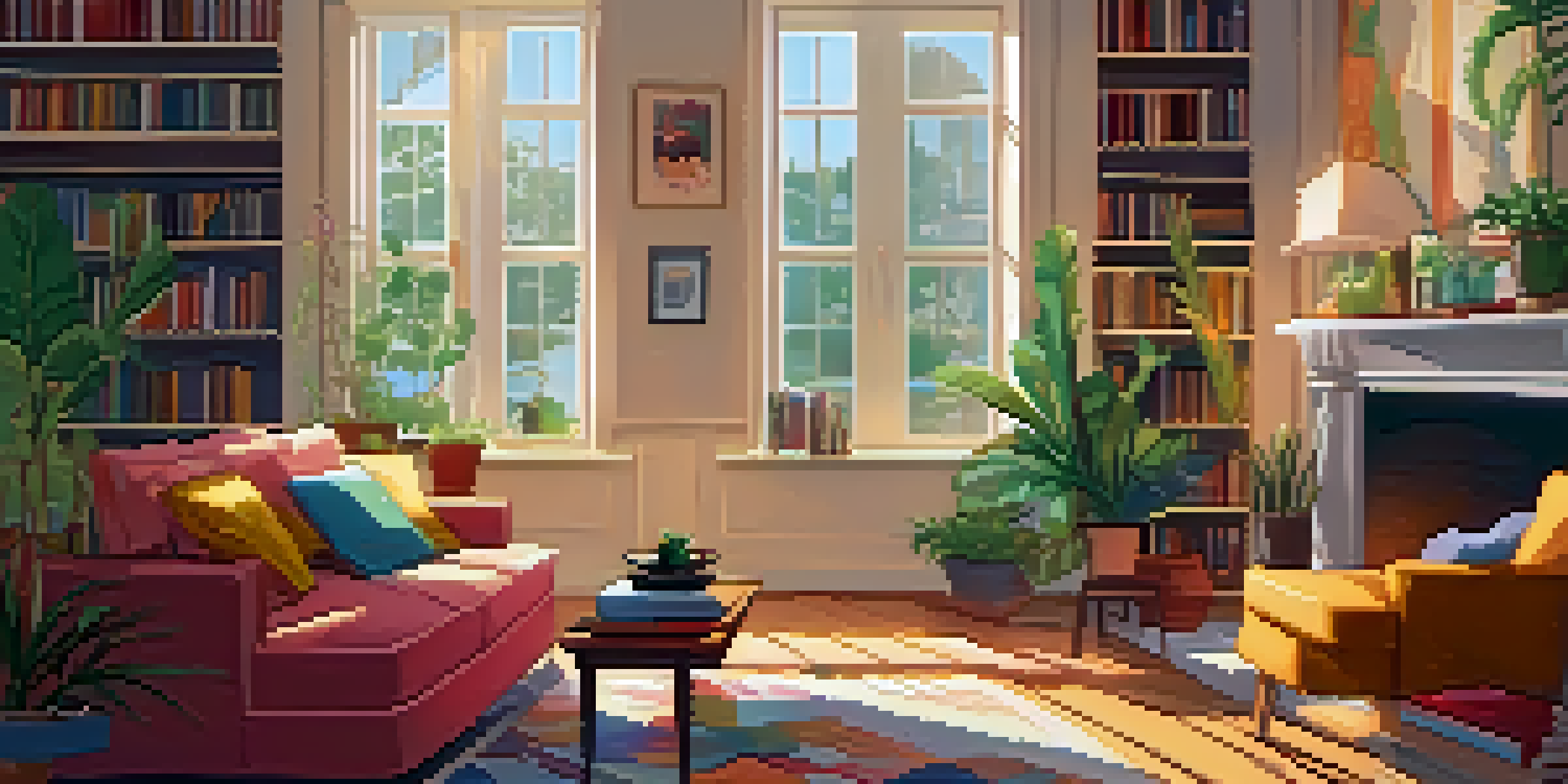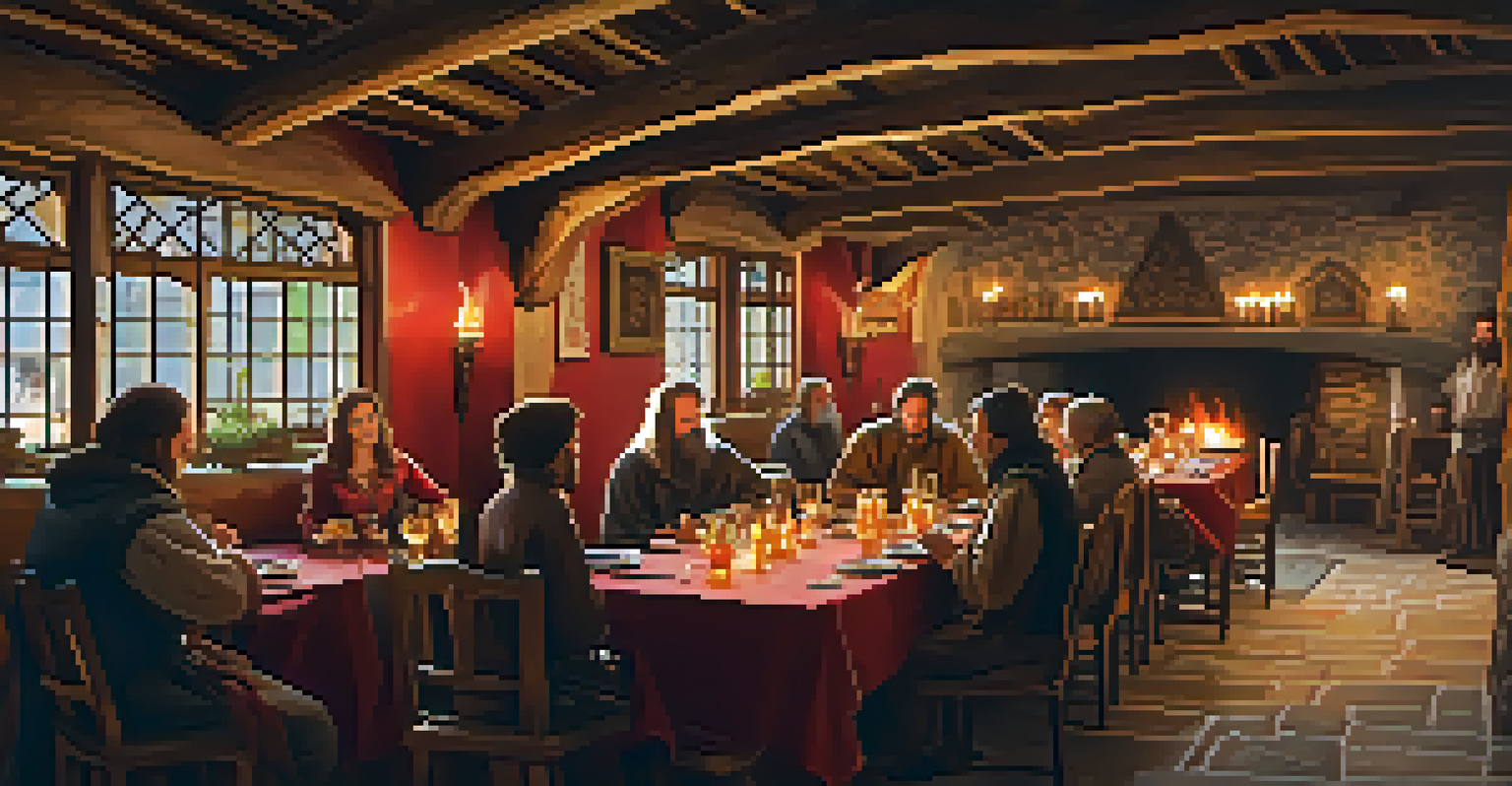Creating Emotion: Art Direction's Impact on Film Narratives

Understanding Art Direction and Its Importance
Art direction is the visual aspect of a film, encompassing everything from set design to color palettes. It’s like the paintbrush that brings a director’s vision to life, creating the mood and atmosphere essential for storytelling. Without effective art direction, a film can feel disjointed, losing the emotional connection with its audience.
Color is the keyboard, the eyes are the harmonies, the soul is the piano with many strings.
For instance, consider a horror film where dark shadows and eerie settings amplify tension. Here, art direction plays a crucial role in guiding viewers’ emotions, making them feel fear and suspense even before a character utters a word. This visual storytelling establishes a foundation that enhances the narrative's emotional depth.
Thus, understanding art direction is vital for filmmakers and audiences alike. It’s not just about aesthetics; it’s about crafting an immersive experience that resonates emotionally, making art direction a cornerstone of impactful film narratives.
Color Theory: Evoking Emotions Through Palette Choices
Color is a powerful tool in art direction, capable of stirring emotions and setting the tone. For example, warm colors like red and orange can evoke feelings of passion or anger, while cooler tones like blue and green often suggest calmness or sadness. Filmmakers strategically choose color palettes to elicit specific emotional responses from the audience.

Take 'The Grand Budapest Hotel,' where Wes Anderson employs vibrant colors to create a whimsical yet nostalgic atmosphere. The carefully curated color scheme not only captivates the eye but also reinforces themes of memory and loss throughout the film. This illustrates how color choices can significantly impact the emotional landscape of a narrative.
Art Direction Defines Film Emotion
Art direction shapes the visual storytelling of a film, creating the mood and emotional connection essential for engaging audiences.
Therefore, understanding color theory is essential for art directors. By thoughtfully selecting colors, they can manipulate audience emotions and enhance the film's overall narrative experience.
Set Design: Crafting Physical Spaces That Resonate
Set design is another pivotal aspect of art direction that shapes the viewer's emotional journey. The design of a space can reflect a character's internal struggles or the film's overarching themes. For instance, a cluttered, chaotic room may symbolize a character's tumultuous mind, while a minimalist space can evoke feelings of isolation.
The details are not the details. They make the design.
In 'Eternal Sunshine of the Spotless Mind,' the fluid, dreamlike set design mirrors the protagonist's fragmented memories. This connection between set design and narrative enhances the emotional engagement, allowing viewers to empathize with the characters on a deeper level. It illustrates how a well-designed set can amplify the story's emotional core.
Ultimately, effective set design not only serves as a backdrop but also enriches the narrative. By creating spaces that resonate with the film's themes, art directors can deepen the audience's emotional investment in the story.
Lighting: Influencing Mood and Atmosphere
Lighting is a crucial element of art direction that significantly influences the mood of a film. The way a scene is lit can evoke various emotions, from warmth and intimacy to coldness and dread. For example, soft, diffused lighting often creates a sense of comfort, while harsh, stark lighting can evoke tension and unease.
In films like 'Blade Runner,' the interplay of light and shadow creates a dystopian atmosphere, enhancing feelings of isolation and despair. The art direction in lighting not only sets the scene but also guides the audience's emotional responses throughout the film. This manipulation of light is essential for building suspense and drama.
Color Choices Impact Audience Feelings
Strategically selected color palettes can evoke specific emotions, enhancing the narrative and overall experience for viewers.
Thus, understanding lighting techniques is vital for effective art direction. By controlling how light interacts with the environment, filmmakers can craft a rich emotional tapestry that draws viewers into the story.
Symbolism in Art Direction: Layers of Meaning
Art direction often employs symbolism to deepen the narrative and evoke emotions. Objects, colors, and even the arrangement of elements within a scene can carry significant meaning. For instance, a broken mirror might symbolize fractured identities or relationships, adding layers of complexity to the story.
In 'Pan's Labyrinth,' the use of symbolic imagery—such as the labyrinth itself—reflects the protagonist's journey between innocence and brutality. These visual symbols resonate emotionally with the audience, enhancing their understanding of the narrative’s themes. This demonstrates how art direction can serve as a silent yet powerful storyteller.
Therefore, recognizing the role of symbolism in art direction enriches the viewing experience. It encourages audiences to look beyond the surface, engaging with the narrative on a more profound emotional level.
Character Costume Design: Reflecting Personalities and Arcs
Costume design is a vital part of art direction that helps define characters and their emotional journeys. The clothes characters wear can reveal their personalities, social status, and even their emotional state. For example, a character dressed in bright colors may embody optimism, while darker attire might suggest turmoil or conflict.
In 'The Devil Wears Prada,' the transformation of the protagonist is visually represented through her evolving wardrobe. As she moves from drab to fashionable, her emotional growth and newfound confidence are reflected in her costumes. This illustrates how costume design can enhance narrative arcs and deepen audience connection to characters.
Set Design Enhances Narrative Depth
Effective set design not only serves as a backdrop but also resonates with themes, deepening the audience's emotional investment in the story.
Thus, costume design plays a significant role in art direction. By thoughtfully curating characters' looks, filmmakers can visually narrate their emotional journeys, enriching the overall storytelling experience.
Art Direction's Influence on Audience Perception
The impact of art direction extends beyond the screen; it shapes how audiences perceive and connect with a film. Effective visual storytelling can evoke empathy, nostalgia, or even discomfort, guiding viewers through an emotional landscape. A film's art direction often determines whether an audience feels engaged or distanced from the narrative.
For instance, in 'Schindler's List,' the use of stark black-and-white visuals, interspersed with poignant color moments, profoundly affects audience emotions. This deliberate choice creates a haunting atmosphere, underscoring the film's themes of loss and humanity. Such art direction not only captivates viewers but also leaves a lasting emotional impression.

Ultimately, art direction plays a critical role in how a film is received. By crafting compelling visuals that resonate emotionally, filmmakers can enhance the audience's overall experience, making art direction an essential element of successful storytelling.